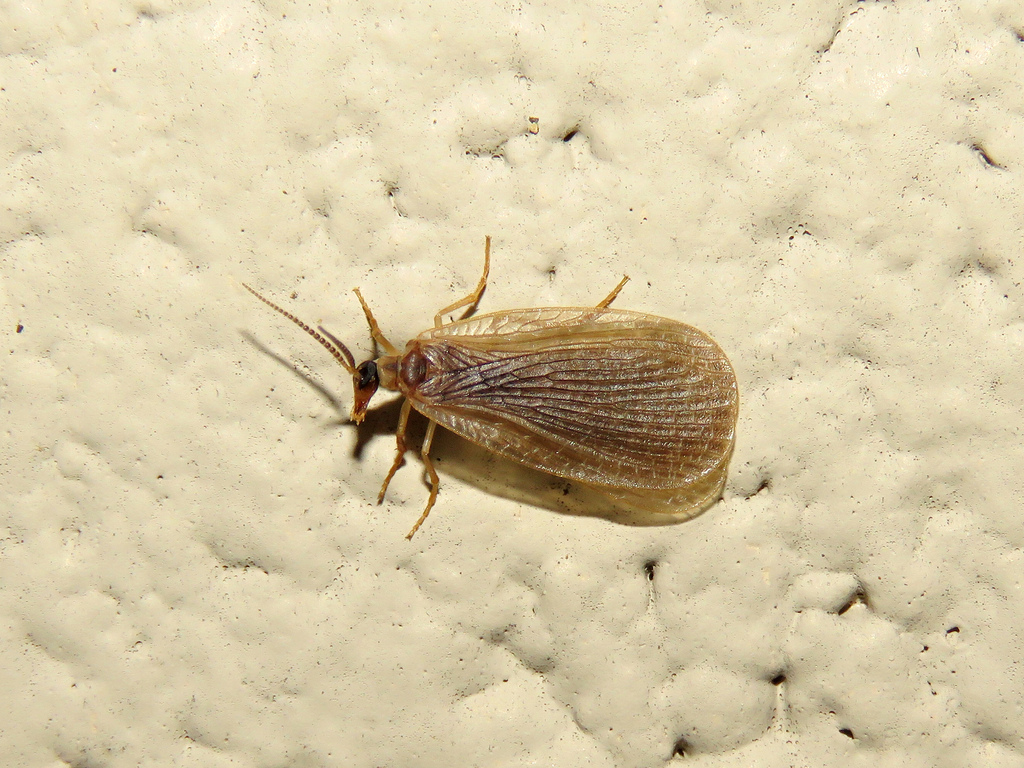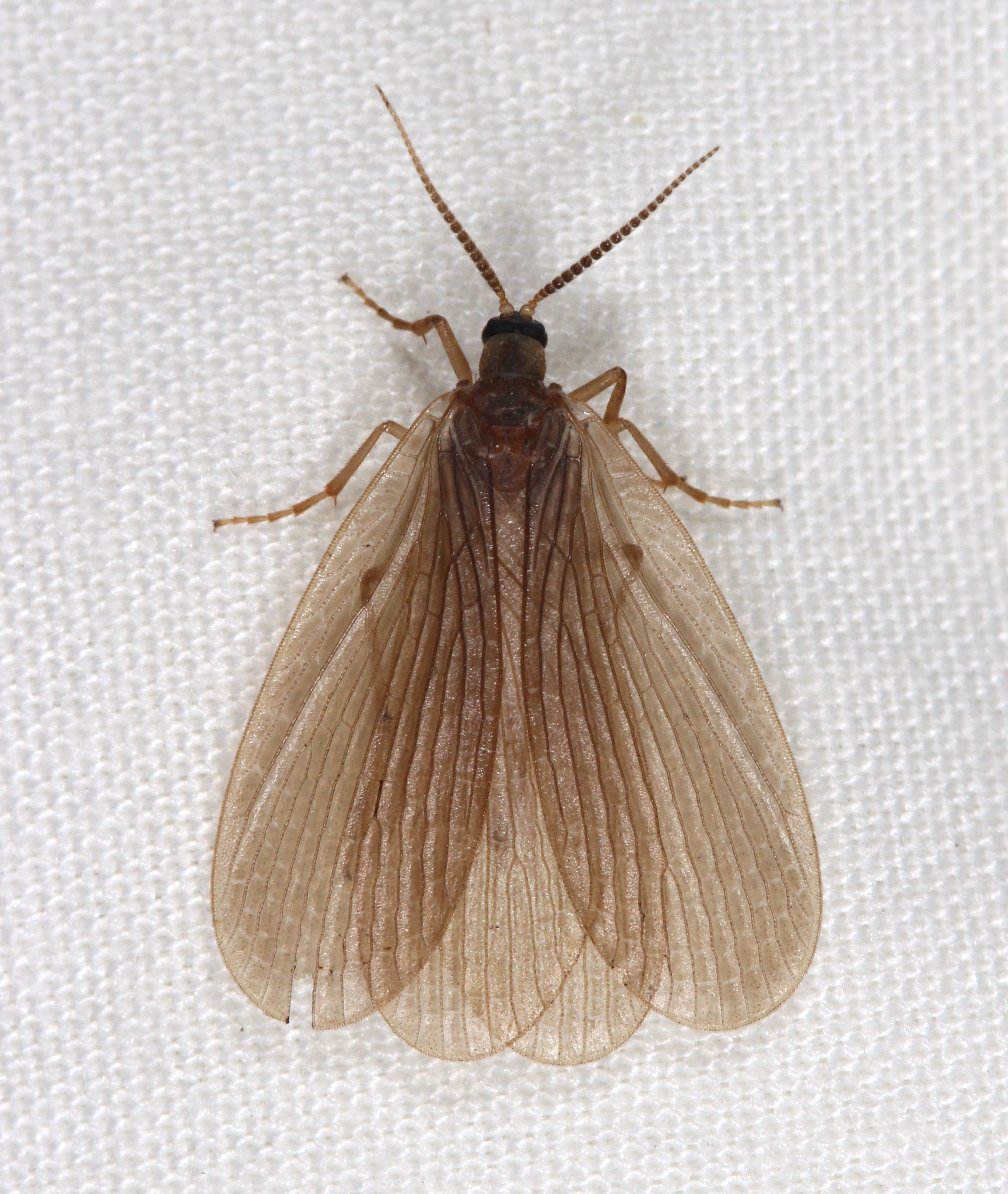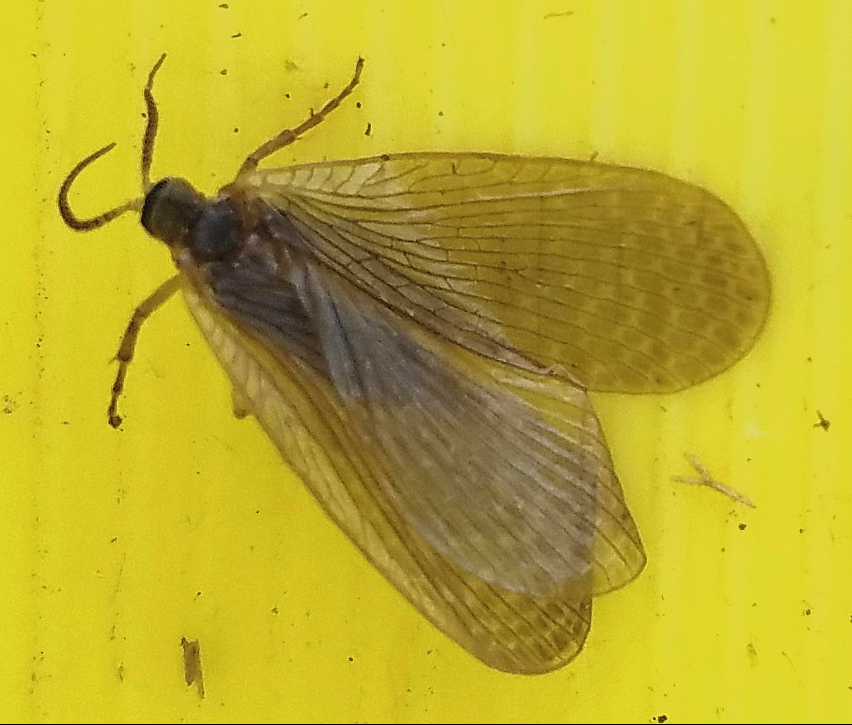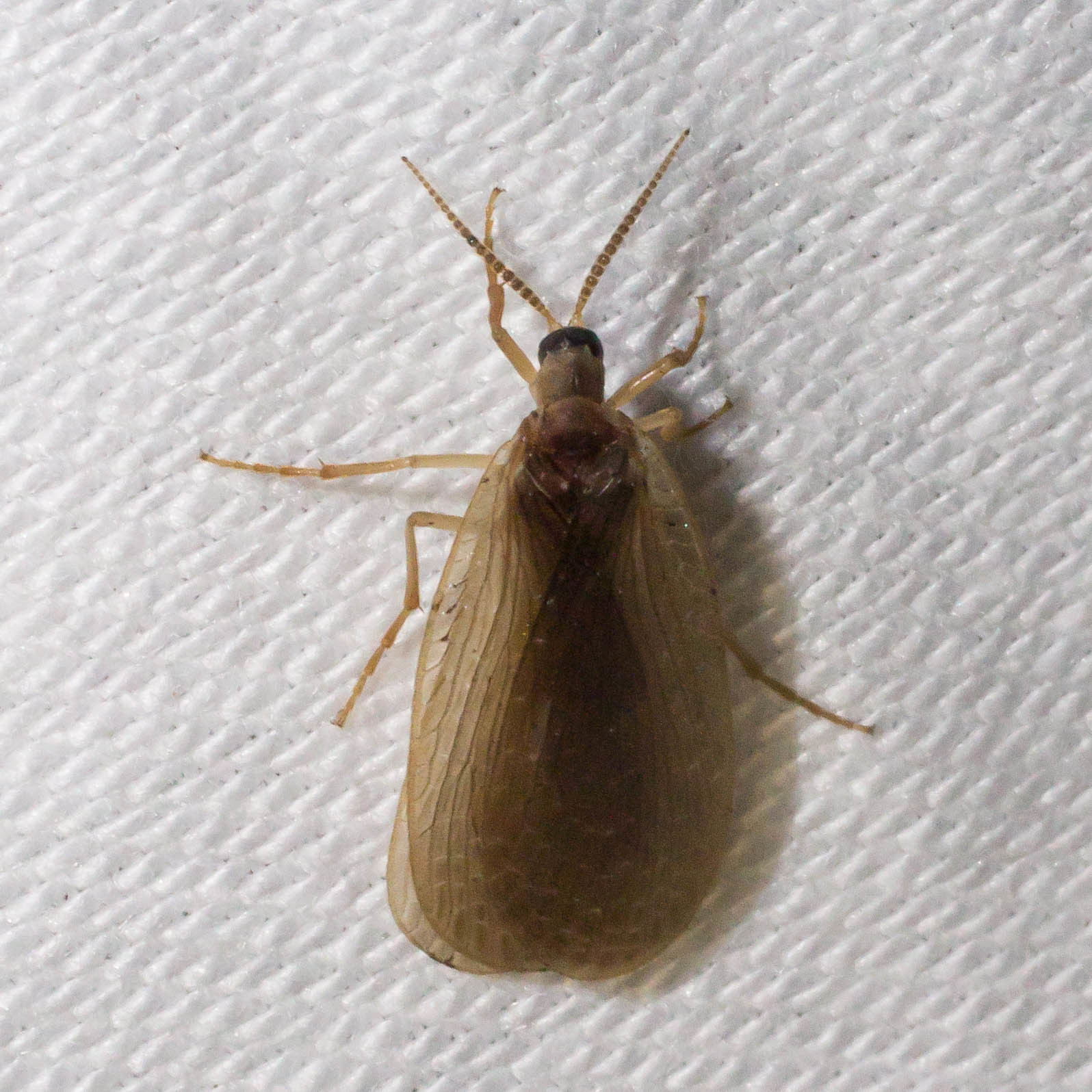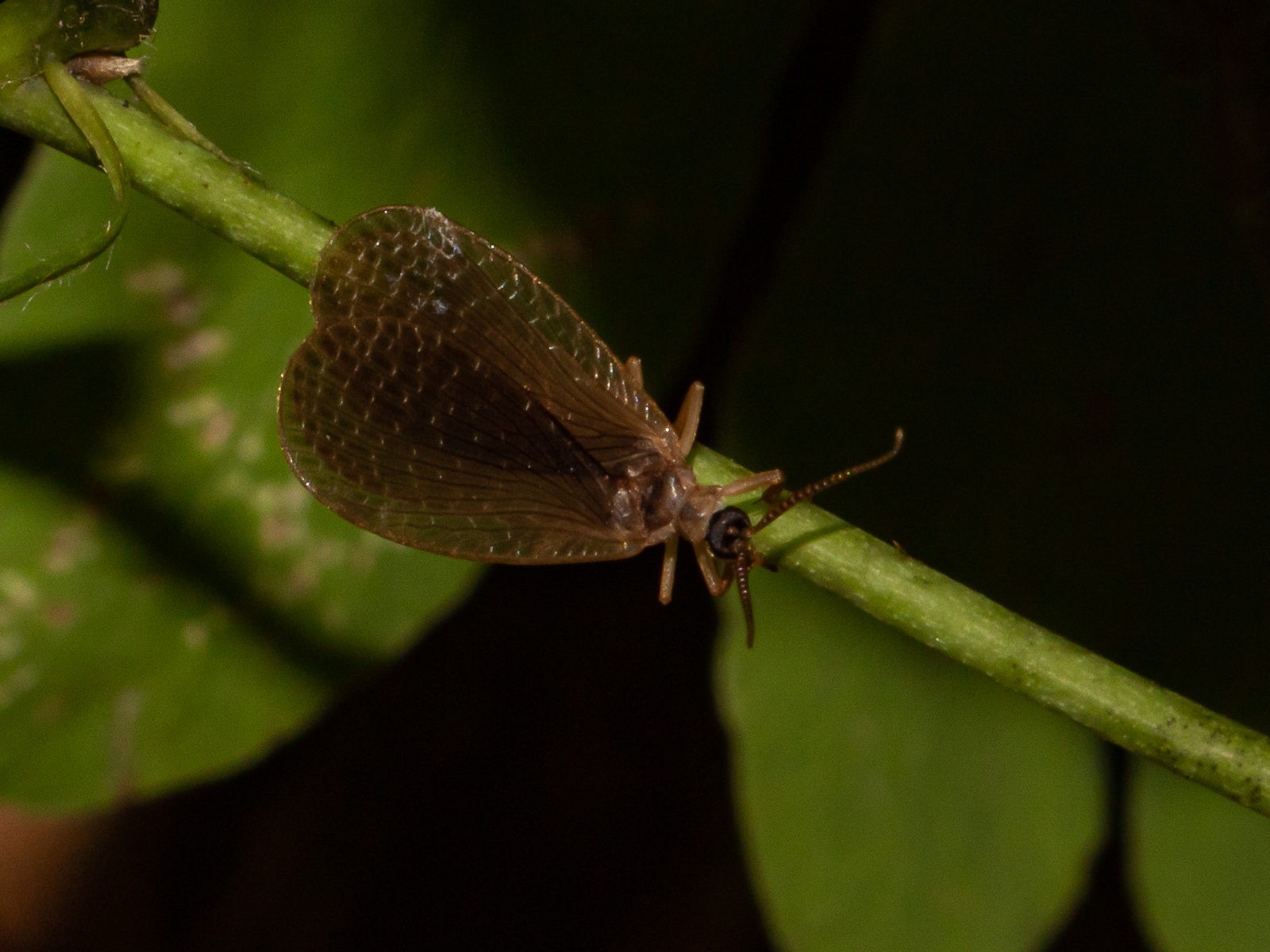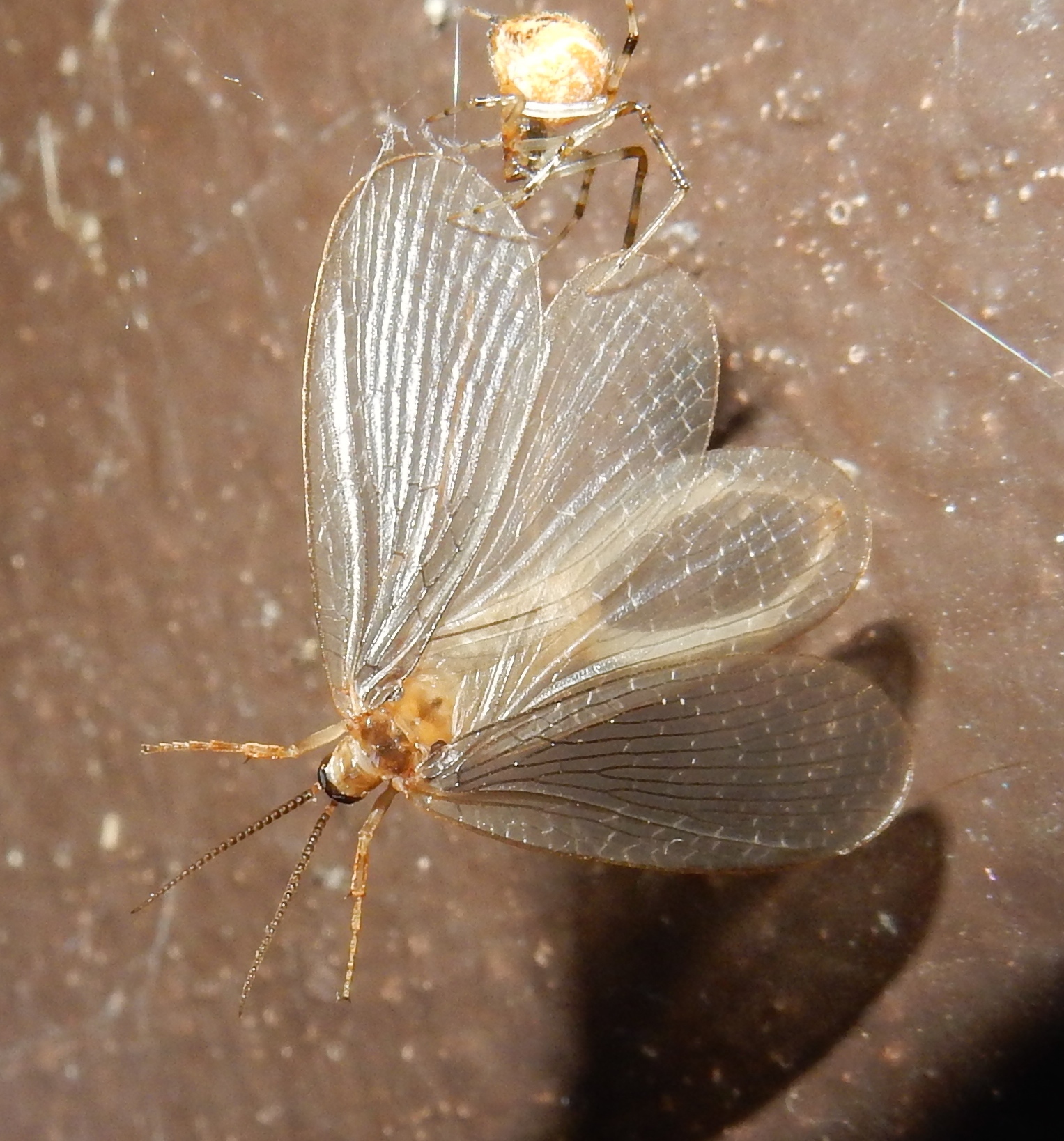Map Snapshot







14 Records
Status
This is our continent's only forcepfly (family Meropeidae). BugGuide notes that there are just three species in the family worldwide: one in North America, one in Australia, and one in Brazil. According to BugGuide, the family was "widespread during the Jurassic from Australia to Antarctica and over the Americas; the extant members are relics that survived at the edges of that ancient range."
BugGuide notes about this species: "Very little is known about biology or behavior. Larvae have never been discovered. The flattened appearance suggests that the adults probably spend much of their time close to the ground hiding in cracks and crevices."
Seasonality Snapshot
Source: Wikipedia
| Merope tuber | |
|---|---|

| |
| Merope tuber | |

| |
| Dorsal view | |
| Scientific classification | |
| Domain: | Eukaryota |
| Kingdom: | Animalia |
| Phylum: | Arthropoda |
| Class: | Insecta |
| Order: | Mecoptera |
| Family: | Meropeidae |
| Genus: | Merope Newman, 1838 |
| Species: | M. tuber
|
| Binomial name | |
| Merope tuber Newman, 1838
| |


Merope tuber, the earwigfly or forcepfly,[1] is the only species in the genus Merope, and the only living member of the family Meropeidae in North America. It occurs throughout the east from Ontario to Georgia, and west to Kansas. Recently the insect has also been found in Florida.[2] This insect's most distinguishing feature is the segmented cerci on the male abdomen. Much is unknown about the adults, which are nocturnal and secretive, sometimes found under logs or in malaise traps near streams, or attracted to lights at nighttime. No M. tuber or Meropeid larvae have been identified.[3] The insect is characterized by long wings with many veins and no ocelli. There is a region of interlocking sclerites that holds the jugum and scutellum on the middle thoracic segment together. This may be used to keep the wings together when pushing up through dirt.[4] A similar apparatus is found in cicadas and ground-dwelling beetles, so it may be that the winged adults dig in soil. The flat appearance of the insect suggests that the insect dwells close to the ground in fissures and other small ground openings,[5] as does the lack of ocelli.
References
[edit]- ^ R. H. Arnett. 2000. American insects: a handbook of the insects of America north of Mexico. p. 834
- ^ J. C. Dunford; P. W. Kovarik; L. A. Somma; D. Serrano (July 2009). "First state records for Merope tuber (Mecoptera: Meropeidae)in Florida and biogeographical implication" (PDF). Retrieved 2010-06-23.
- ^ Friedrich, F.; et al. (2013). "The head of Merope tuber (Meropeidae) and the phylogeny of Mecoptera (Hexapoda)" (PDF). Arthropod Structure & Development. 42: 69–88. doi:10.1016/j.asd.2012.09.006. PMID 23078868. Retrieved September 26, 2014.
- ^ Hlavac, T.F. (1974). "Merope tuber (Mecoptera): A wing-body interlocking mechanism". Psyche: A Journal of Entomology. 81: 303. doi:10.1155/1974/45917.
- ^ J.C. Dunford; D. Serrano & L.A. Somma (2006). Earwigflies in the Great Smokies (PDF).
Further reading
[edit]- Wills, Allan (2007). "Earwig Flies? Ancient and Mysterious Insects". Western Wildlife. 12 (1): 5.
- Robin McLeod (2005-11-06). "Species Merope tuber - Forcepfly". Retrieved 2010-06-23.
- Snodgrass and Wigglesworth- Cornell Undergraduate Entomology Club (2009-01-25). "The Hunt For Merope Tuber..." Retrieved 2011-01-30.
